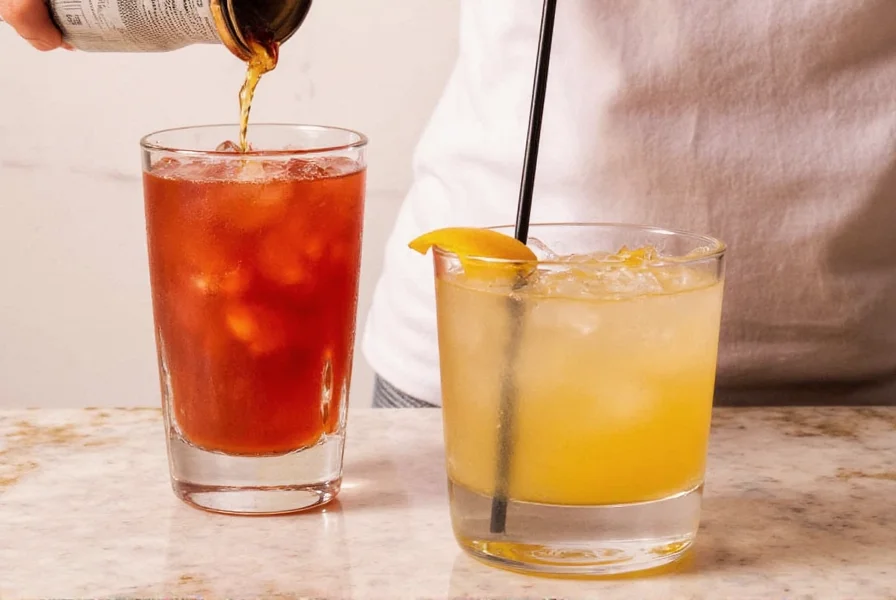The names of Mexican drinks often carry rich histories rooted in indigenous languages, Spanish colonization, and cultural traditions. This article explores the origins and meanings behind each name, providing a deeper understanding of Mexico's rich beverage heritage.
Key Mexican Drink Names and Their Origins
- Tequila: Named after the town of Tequila in Jalisco. The word comes from Nahuatl "tequillan" (place of work) or "tequilate" (cutting plants). The drink is made from blue agave, which is harvested in this region.
- Margarita: The origin is debated, but one theory links it to the Spanish word for "daisy" (margarita), as it's a variation of the Daisy cocktail. Another theory suggests it was named after a woman named Margarita Sames who popularized it in the 1940s.
- Paloma: Spanish for "dove." The drink is named for its light color (resembling dove feathers) or the grapefruit soda used, which evokes the refreshing flight of a dove.
- Horchata: Derived from Latin "hordeum" (barley), though Mexican horchata uses rice or seeds. The name reflects historical Spanish influence, while the drink itself has indigenous roots.
- Tamarindo: From the tamarind fruit ("tamar" in Arabic, "hindī" meaning "Indian"), as tamarind was introduced via trade routes. The name directly describes the primary ingredient.
- Champurrado: From "champurrear" (to mix), referring to the blending of chocolate and masa. It evolved from pre-Hispanic chocolate beverages with Spanish-introduced ingredients.
- Cerveza: Simply means "beer" in Spanish, but Mexican brands like Corona ("crown") and Modelo ("model") have names reflecting branding rather than ingredients.
Cultural and Linguistic Roots of Mexican Drink Names
Mexican drink names reflect the country's complex history of indigenous cultures and Spanish colonization. Many names have roots in Nahuatl, the language of the Aztecs, while others come from Spanish or other European languages. For example:
- Nahuatl Influence: Words like "pulque" (from Nahuatl "pōllique" meaning fermented drink) and "atole" (from "atl" for water) preserve pre-Hispanic heritage.
- Spanish Influence: Terms like "cerveza" (beer) and "vino" (wine) came with colonization, while "horchata" adapted from Latin via Spanish.
- Regional Names: "Bacanora" (from Sonora), "Sotol" (from Chihuahuan Desert plant), and "Tequila" (Jalisco town) often include geographical references.
What are the most common names of Mexican drinks I should know?
The most recognizable names include Tequila (named after Jalisco town), Margarita (Spanish for "daisy"), Paloma (dove), Horchata (from Latin "hordeum"), Tamarindo (tamarind fruit), Champurrado (to mix), and Cerveza (beer). These names reflect ingredients, regions, or cultural history.
How do Mexican drink names reflect their ingredients or origins?
Many names directly describe key components: "Tamarindo" comes from tamarind fruit, "Champurrado" means "to mix" (chocolate + masa), and "Paloma" refers to the dove-like color of grapefruit soda. Indigenous names like "pulque" (fermented agave sap) preserve pre-Hispanic heritage, while Spanish-derived terms like "cerveza" reflect colonization.
What's the difference between Tequila and Mezcal in terms of naming?
"Tequila" specifically refers to mezcal made from blue agave in Jalisco's Tequila town, while "Mezcal" (from Nahuatl "mexcalli" meaning oven-cooked agave) can be made from various agave types across Mexico. The name "Tequila" is geographic, while "Mezcal" describes the production method.
Are there non-alcoholic Mexican drink names I should recognize?
Yes! Common non-alcoholic names include Horchata (rice-cinnamon drink), Tamarindo (tamarind fruit beverage), Jamaica (hibiscus tea), Naranjada (orange-based drink), and Agua de Piña (pineapple water). These "aguas frescas" (fresh waters) are staples served with meals throughout Mexico.
Why do some Mexican drink names have Spanish origins while others don't?
Mexican drink names reflect cultural fusion. Spanish-derived names like "cerveza" (beer) or "vino" (wine) came with colonization, while indigenous names like "pulque" (fermented agave sap) or "champurrado" (chocolate drink) preserve pre-Hispanic heritage. Some names blend both cultures, like "atole" (Nahuatl) becoming "champurrado" with Spanish chocolate.
How can I identify regional Mexican drink names?
Regional specialties often include location references: "Tequila" is named after Jalisco's town, "Bacanora" comes from Sonora, and "Sotol" is named after the Chihuahuan Desert plant. Street drinks like "Rompope" (eggnog-like beverage) vary by region—Guanajuato's version differs from Veracruz's. Look for geographical indicators in the names to identify origins.
Conclusion
From the Nahuatl roots of "pulque" to the Spanish influence in "cerveza," the names of Mexican drinks are living history. Each name tells a story of cultural exchange, regional identity, and culinary innovation. Understanding these origins transforms a simple beverage into a meaningful connection to Mexico's rich heritage.











 浙公网安备
33010002000092号
浙公网安备
33010002000092号 浙B2-20120091-4
浙B2-20120091-4